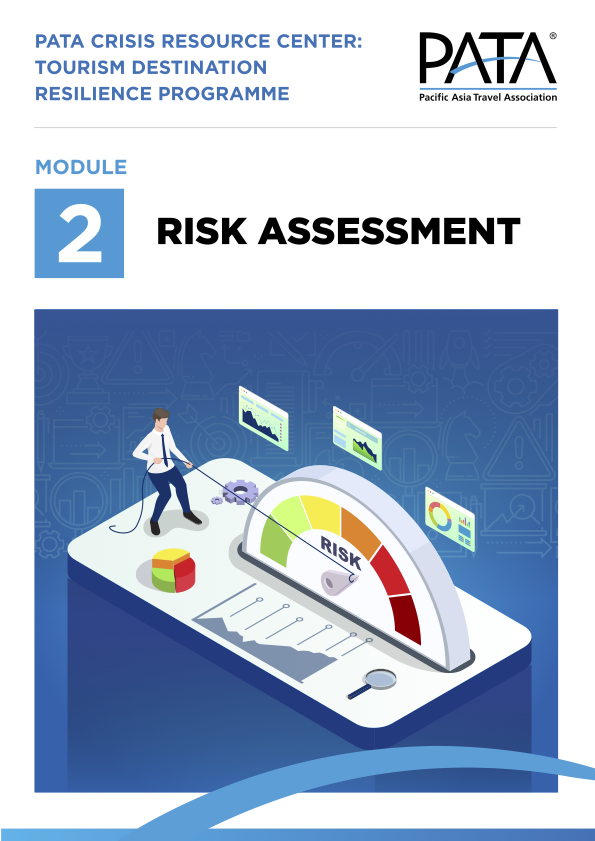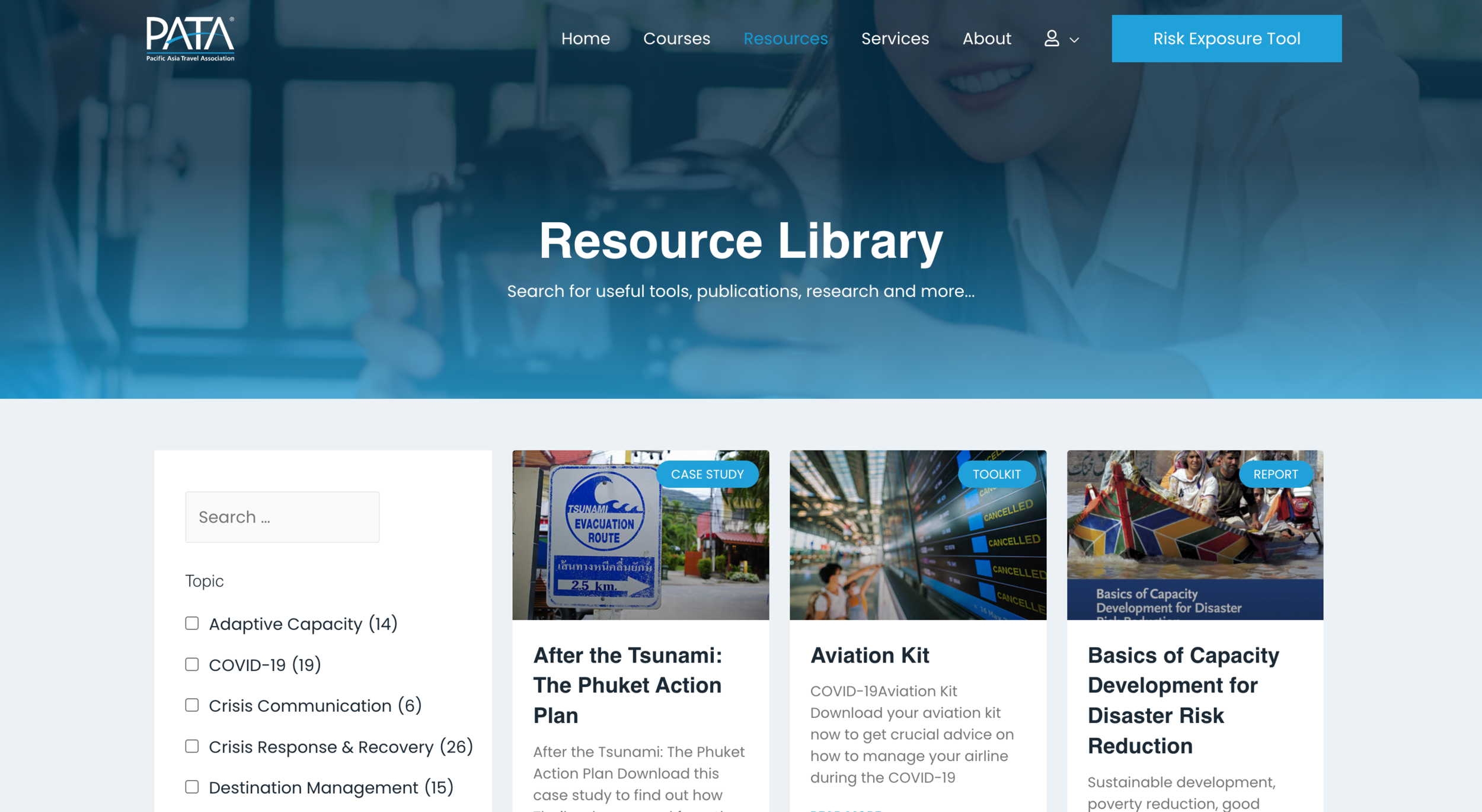Ultimate Guide to Tourism Destination Resilience Certification
Why is Tourism Destination Resilience essential?
The Resilience Leads COVID-19 Recovery post introduced PATA's Tourism Destination Resilience (TDR) programme as an important tool for tourism professionals, businesses and destinations to not only be one step ahead in the COVID-19 recovery but also, more importantly, to be prepared to win back customers and become more sustainable.
Steps involved in getting certified for TDR programme.
The first tool of PATA's TDR programme is the TDR course, which comprises 10 online learning modules that guide learners through the step by step process towards destination resilience.
The 10 modules are:
Introduction to Tourism Destination
Risk Assessment
Destination Management Strategy
Emergency Planning
Post-Crisis Planning: Respond, Rethink, Recover
Training and Capacity Building
Resilient Infrastructure and Services
Local & Regional Market Supply and Demand
Tourism Offer Diversification
Sustainability as a Competitive Advantage
Learners can receive a certificate after the completion of each module as well as of the full course if they achieve the minimum required score in the final quiz.
The course and final quiz are available on PATA's SRC (Sustainability Resource Centre)website in four languages: English, Vietnamese, Bahasa Indonesia and Khmer. Chinese and Thai language versions are currently underway and expected to be published in April 2022.
How to enrol and start the TDR course?
The TDR course is open sourced to all tourism professionals interested in increasing the resilience and sustainability of their businesses and destinations. To enrol, go to the TDR Course page, choose a language and register through the blue button, as the example of the English TDR course page:
Once logged in, you can choose a module to start learning. The modules do not have to be completed in a sequence to be able to achieve the full certification; you can take them at any order.
When you click on a module, you will be redirected to the page below, where you can follow your progress. To begin, click on Start Module.
Each module requires approximately one to two hours to be completed. The modules contain exercises (ungraded), case studies, best practices and additional resources for continued learning. You can stop and resume the modules at any time. At the end, learners can also download the module's PDF for more convenience.
What else does the programme offer?
To help learners deepen their knowledge on resilience, an online searchable resource library was also published on the SRC website, with over 50 resources on the topics of resilience, sustainability, crisis response, risk assessment, risk management, adaptive capacity and others.
The library encompasses reports, case studies, toolkits, indexes and criteria, handbooks as well as online courses.
Finally, there are two other helpful tools available on the SRC website, these ones especially designed for destination managers. They are the Risk Exposure Tool and the Risk Assessment Tool.
The Risk Exposure Tool calculates national-level destinations' risk exposure based on PATA's Asia Pacific Visitor Forecasts 2021-2023 and important indexes, such as the:
World Travel and Tourism Council (WTTC) Country Data 2019-2021;
World Economic Forum Travel and Tourism; Competitiveness Index 2019;
German Watch: Global Climate Risk Index 2021;
Euromonitor International: Sustainable Travel Index 2020.
The Resilience Assessment Tool, on the other hand, allows destinations to assess their level of resilience based on their existing capacities on risk assessment, risk management, adaptive capacity and sustainability. After answering the 20 questions, the tool indicates recommended actions for the destination to increase its resilience.
Still have questions about the Tourism Destination Resilience programme? Get in touch at ssr@pata.org for any queries, suggestions or support.
Click on the “Tourism Destination Resilience“ tag below to read more about what is destination resilience and how to help your destination build resilience.








